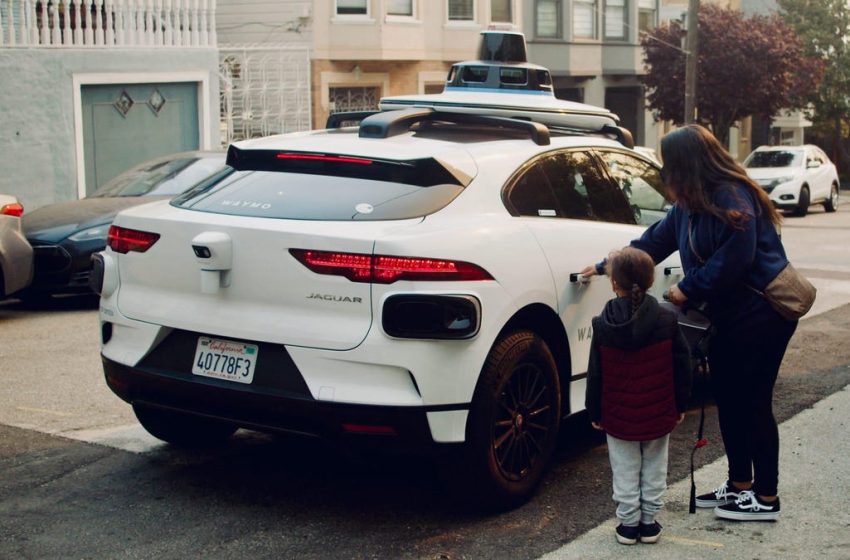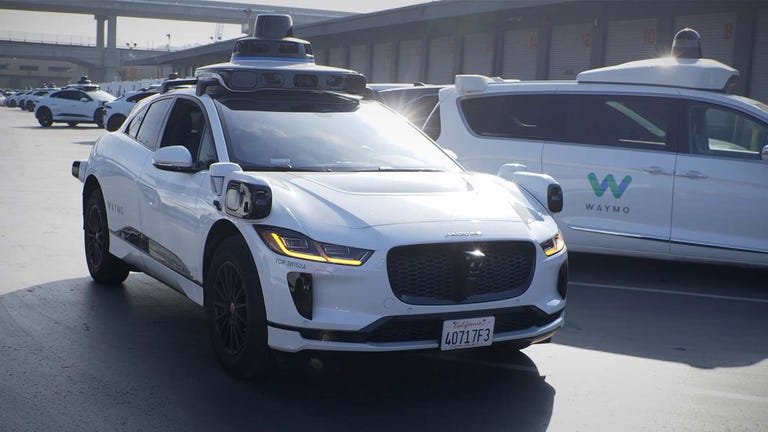Waymo Opens Driverless Rides to Anyone in San Francisco, No Wait List Needed

Waymo said on Tuesday it’s making its driverless ridehailing service available to anyone in San Francisco — no wait list required. To get a lift in one of the company’s autonomous vehicles, just download the Waymo One app and put in your destination.
The self-driving arm of Google’s parent company Alphabet has been operating in San Francisco since 2009, and rolled out fully autonomous rides in the area in late 2022. Waymo One is also available to all public riders in metro Phoenix and to select members of the public in Los Angeles. The company is currently conducting testing in Austin, with the goal of opening up to riders later this year. It uses the all-electric Jaguar I-Pace to operate its service.
I’ve hailed several rides with Waymo myself. Despite how disorienting it can feel in the first few moments — especially when seeing an empty driver’s seat while the steering wheel turns by itself — I felt surprisingly secure and comfortable, and I enjoy the experience of having a solo ride. (It helps that I can use Google Assistant to control the car’s audio and blast as much Taylor Swift through its speakers as I want.)
Read more: Waymo’s New Feature Scans for Cyclists, Other Cars to Prevent Accidents
Waymo’s ridehailing service is available 24 hours a day, seven days a week in San Francisco. The company says nearly 300,000 people have signed up to ride with Waymo since it first opened a wait list in the city. The cost of a ride (and wait time) varies depending on the time of day and location, but in my experience, prices are comparable to what you’d pay with Uber or Lyft.
In Phoenix, Waymo’s fully autonomous service is also available 24/7, and has been open to the public without a wait list since 2020. The company is also testing autonomous rides on freeways in the area. In an exclusive video shared with CNET in May, Waymo showed its vehicles navigating on- and off-ramps and changing lanes without a driver behind the wheel.

Watch this: Watch a Waymo Driverless Car Speed Down a Freeway
Waymo’s steady rollout hasn’t been without concerns. The company’s vehicles have been involved in a handful of high-profile collisions, including one with a biker in San Francisco, and another with a towed pickup truck in Phoenix. (It recalled and updated its software to address the issue.)
Waymo, for its part, says that over 14.8 million miles, its autonomous Waymo Driver “was up to 3.5x better in avoiding crashes that cause injuries and 2x better in avoiding police-reported crashes than human drivers in SF and Phoenix.”
Rival autonomous ride service Cruise has similarly faced backlash for safety concerns, and was suspended indefinitely in California after one of its driverless cars hit a jaywalking pedestrian. Earlier this month, the GM-owned company resumed operating manual and supervised rides in Dallas and Houston, as part of its effort to “validate our self-driving technology against our rigorous safety and performance standards,” the company said in a post on X. In another post, it noted, “We’ll start with human driven vehicles and move to supervised autonomous driving with a safety driver behind the wheel in the coming weeks, guided by safety.”
Read more: Ever Wondered What Your Uber Drivers Really Think of You? Here’s How to Check





